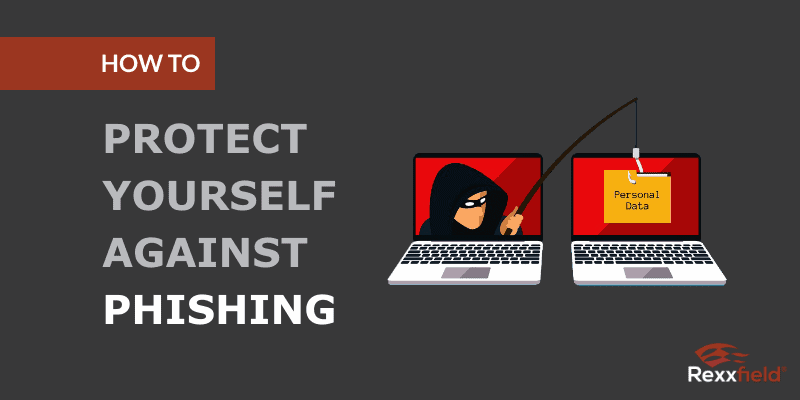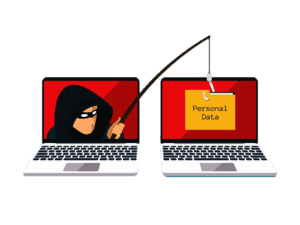Phishing definition and how to protect yourself
Phishing is an attempt to deceive users in order to take sensitive information from them via emails, telephone or text.
Social Engineering
Phishing applies social engineering. This is the act of deception, or capitalizing on an individual’s trust to encourage them to expose delicate information.
Spear Phishing
Spear phishing is a type of phishing assault that targets a particular individual or collection of people. Attackers may research on their targets using social media sites networks and publicly available details online, making use of the information to craft a credible message to convince victims to click, download or hand out added, non-public information.
Details targeted with phishing
- Login details: with phishing, usernames and passwords are targeted to make use of to log right into your personal and job accounts,
- Financial information: credit card numbers, tax obligation details or any information that can be made use of to commit tax obligation scams and swipe cash,
- Email addresses of colleagues or friends and family: these are useful for sending, even more, persuading phishing emails to individuals around you,
- Confidential business info: details regarding mergings and procurements, research and development, and any other information that could be made use of to influence supply trading or for affordable gain,
- Phone numbers: they are used to bypass two-factor authentication, and to supply SMS-based phishing campaigns,
- Personal identification information: names, physical addresses, birthdates, Social Security Numbers, and so on. These details are utilized for identification theft,
- Medical records or medical insurance information: like insurance plan IDs that could be made use of to dedicate health care insurance fraud.
How Phishing Emails work
Phishing methods and objectives vary from credential and data burglary to malware infection and equipment concession.
With phishing emails, methods typically entail:
Sending out an email to a user.
Take data by encouraging the user to:
– Send them information,
– Click on a web link, visit a spoofed website, after that enter username and password,
– Download and install an email attachment which contains malware,
– Check out a harmful website that hosts a manipulate set that performs malware.
The objectives and techniques of phishing efforts may differ. Recognizing how malware is spread out and credentials are swiped is half the battle.
See examples of phishing emails
How to protect yourself against phishing emails
IT Administrators defense against phishing
- Trigger two-factor verification.
By doing so, even if your individuals’ passwords are endangered by a phishing assault, their accounts will be secured by the second element of authentication. Attackers can’t visit without possession of their physical gadget, like a phone or protection token. One of the safest approaches makes use of a U2F (Global second Aspect) certified. Here, a USB device is linked into individuals’ computers. This enables them to tap it in quickly and log in. - Have individuals update their gadgets on a timely basis.In several of the phishing techniques, the individual downloads a harmful attachment. This checks their gadget for susceptibilities before compromising it. Tools running older versions of software programs, with no safety functions enabled, are more likely to be influenced by publicly-known vulnerabilities. This leaves them vulnerable to a compromise.
- Know the safety and security wellness of gadgets accessing your network.
Numerous users are utilizing their individual smart devices and laptop computers to log into your organization’s resources, from different networks, in all hours. Use an endpoint safety and security remedy to gain insight right into the protection of health and wellness of every device. - Know the individual vs. corporate-owned gadgets on your network.
Personal tools in the workplace may have several work and personal accounts. The line between the two has obscured. BYOD can introduce risks, but your team can sustain it by utilizing an endpoint option to recognize individual vs. business tools, and enhancing gain access to safety and security policies to need a lot more rigid security look for personal tools accessing work applications.
For Individuals
- Never click on web links in emails. Instead, enter URLs yourself.Web site URLs may not be what they appear in your email messages. It’s always much safer to key in the domain on your own before entering any delicate info right into any online types.
- Activate two-factor verification (2FA) for each account.
If you can, make use of a cost-free authentication mobile app, such as WEB LINK. Set up authentication based 2FA for all of your online accounts to shield against unapproved accessibility via phishing. Or, make use of passcode based approaches if that’s what is offered (established your mobile application to produce one-of-a-kind passcodes, then enter them into your login display). - Be careful of certain social signs, urgent demands, and gifts or cash offers.
Messages that appear to be urgent ask for either prompt payment updates to your account, password changes, and so on, use the responsive psychological reaction of a user to get details from them rapidly. - Be careful of social networks, amusement, or reward scams.
Strikes targeting social media platforms have nearly tripled since last year. These sorts of scams are leveraging the inherent trust between users and a system or brand name. By targeting workers that blend individual and organization techniques, fraudsters are hoping that workers may decrease their guard for a message that interests them on a personal degree. - Verify the sender in person or using a different channel of interaction.
If you have the ability to confirm that the sender really sent you the message in question by asking them face to face or over a various messaging solution, or call them. In some cases, those methods can additionally be compromised or phished, so if you’re still unsure, send the message to your IT or safety group for review. - Look for and run updates; usage software application that updates immediately whenever feasible.
Keeping your software and devices up to date is one method to protect yourself against malware compromises and data theft as the outcome of phishing. Do them commonly and on a timely basis.
Contact our investigators if you need help to identify a person that stole your information.




Trackbacks/Pingbacks